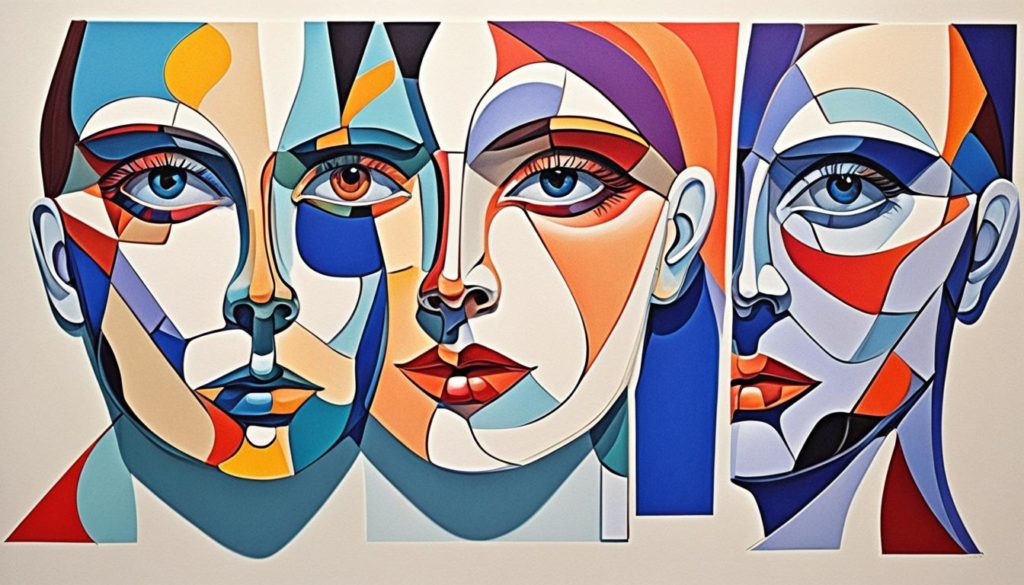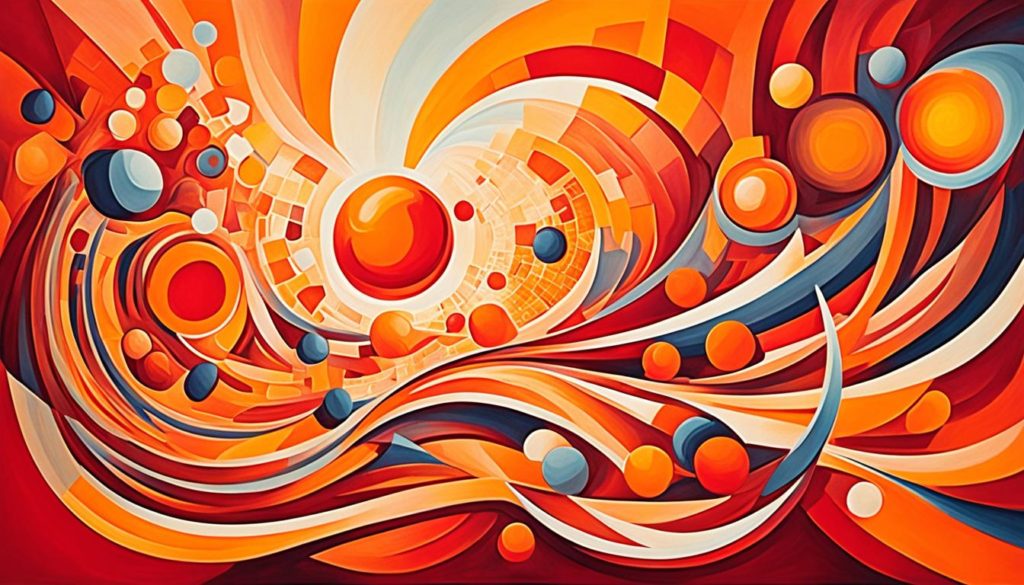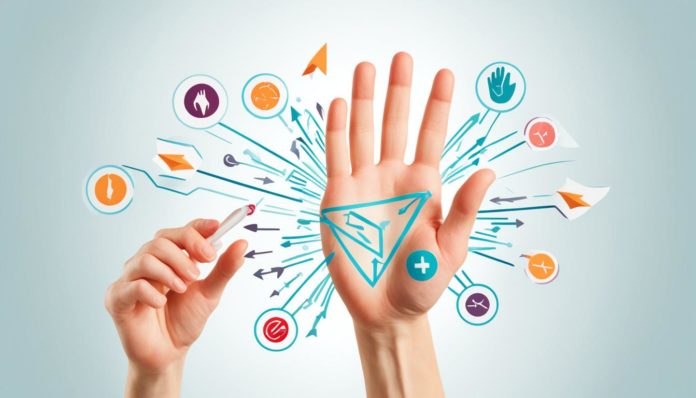Did you know almost 5% of people in the U.S. get blisters each year? This condition, often not taken seriously, can really affect our daily lives. It’s important to take care of blisters properly to avoid pain and stop infections.
Blisters can happen to anyone, whether you’re an athlete or just got new shoes. Knowing how to handle and prevent blisters is key to feeling better quickly and avoiding them in the future.
Key Takeaways
- Blisters affect a significant portion of the population annually.
- Effective blister care is essential for preventing infections and discomfort.
- Understanding the causes of skin blisters can help in their treatment and prevention.
- Proper treatment options range from home remedies to seeking medical advice.
- Prevention strategies include choosing appropriate footwear and maintaining good hygiene.
What is a Blister?
Blisters are tiny pockets of fluid under the skin. They form to protect damaged skin. They can appear from injuries, friction, or skin conditions.

Definition and Explanation
The term blister definition covers various skin problems. These problems involve fluid under the skin. The fluid can be clear, like serum, or contain blood or pus. It helps heal and protect the tissue below.
Types of Blisters
Knowing different types of blisters is key for healthy skin. Here are some common ones:
- Friction Blisters: Caused by rubbing or pressure, they’re common on hands and feet from walking or handling tools.
- Blood Blisters: These form from pinching that hurts blood vessels. They’re dark red or purple, filled with blood and fluid.
- Heat Blisters: Burns or sunburns can lead to these. They happen when skin gets too hot or touches something scalding.
- Allergic Blisters: Allergies can trigger these blisters. They usually come with a rash from touching something irritating.
Understanding blisters and their causes is important. It helps with their care and treatment. This knowledge supports better skin health.
Common Causes of Blisters
Blisters can form for many reasons, each affecting the skin differently. Knowing why helps with prevention and treatment.

Friction and Pressure
Friction blisters often come from too much rubbing or pressure. Things like running or hiking can cause them, especially with tight shoes. The Cleveland Clinic says well-fitting shoes and socks that keep moisture away can lower the risk.
Burns and Heat
Blisters from heat happen when skin touches something very hot or cold. This could be from hot objects, the sun, or ice. The Burns Association suggests using aloe vera gel and keeping the skin cool for healing.
Allergic Reactions
Allergic reactions can also lead to blisters. The Journal of Allergy and Clinical Immunology shows this happens with certain metals, plants, and chemicals. Avoiding these allergens is important to stop blisters from forming.
Symptoms and Identification
It is essential to know early signs of a blister for proper treatment. Look for typical blister symptoms like a fluid-filled bump on the skin. These bumps can vary in size and might be clear or have blood in them. Feeling a stinging or burning in the area is a common early sign.
To spot blisters accurately, watch how skin irritation changes. At first, the skin might be red and tender. Later, this irritation can turn into a fluid-filled bump. This is how your body tries to protect the skin underneath.
To tell blisters apart from other skin issues, look at this table of symptoms:
| Condition | Symptoms | Appearance |
|---|---|---|
| Blister | Stinging, burning, fluid-filled bump | Raised, clear or bloody fluid |
| Corn | Thickened skin, pain | Hard, rounded bump |
| Callus | Thickened skin, less sensitive | Flat, broader area of skin |
For more detailed info on blister symptoms, check out Johns Hopkins Medicine’s guide. WebMD offers visual aids for identifying blisters. And, the American Family Physician provides education on different kinds of skin bumps. These resources help with correct identification.
Early recognition and correct identifying blisters mean faster care. This reduces pain and helps avoid more serious issues.
Blister Treatment Options
When you have a painful blister, knowing how to treat it can really help. It can make you feel better and heal faster.
Home Remedies
For small blisters, you can treat them at home. Start by washing the area with soap and water. Then, put a clean bandage over it to keep out germs.
Adding an antibiotic ointment also helps it heal and stops bacteria. It’s key not to pop the blister. Popping it can cause an infection.
Over-the-Counter Treatments
There are lots of treatments you can buy without a prescription for blisters. Using cushioning like moleskin, or special pads by Dr. Scholl’s, helps a lot. These reduce rubbing and help your blister heal faster.
Consumer Reports says these help with comfort and speed up healing too.
When to See a Doctor
Sometimes, you need a doctor for a blister. If your blister looks infected, like if it’s red, swollen, or has pus, see a doctor. Also, if burns cause it or if you have diabetes, get medical help right away. This is to make sure it heals right and avoids more problems.
Prevention Tips for Blisters
To avoid blisters, it’s key to pick the right shoes, use protective stuff and keep clean. Doing these things will help keep your skin safe. This makes it less likely you’ll get blisters.
Proper Footwear
Choosing the correct shoes is a top way to stop blisters. The Podiatric Medical Association says shoes must fit well and support your feet. Consider these footwear tips:
- Shoes should not be too tight or too loose.
- Choose shoes made of breathable stuff like leather or mesh.
- Wear socks that keep your feet dry.
Use of Protective Gear
Wearing protective gear is also key for stopping blisters. NIOSH suggests gear like padded insoles and blister bandages. They help protect against rubs, which often cause blisters.
Maintaining Good Hygiene
Keeping clean is important too. The Global Hygiene Council says clean and dry skin keeps blisters at bay. To stay clean do the following:
- Wash your feet every day with gentle soap and dry them well.
- Change your socks often, especially if you sweat.
- Keep toenails short to stop trauma and pressure.
| Prevention Method | Details |
|---|---|
| Proper Footwear | Well-fitting shoes, breathable materials |
| Protective Gear | Padded insoles, moleskin, blister bandages |
| Good Hygiene | Daily washing, dry feet, regular sock changes |
Blisters on Feet: Causes and Treatments
Foot blisters are small fluid-filled pockets on our skin. They can hurt and cause problems. Knowing why they happen and how to treat them is key.
Common Causes
Friction and pressure often lead to foot blisters. This is usually because of shoes that don’t fit right. The APMA says that shoes that are too tight or too loose rub against the skin. This causes blisters. Also, too much moisture from sweating softens the skin, making it easy to damage. Conditions like eczema and dermatitis can make blisters more likely. For more details, click here.
Effective Treatments
Treating blisters fast and right is important. For small blisters, simple home care works well. Clean the blister, then put a sterile bandage on it. This protects it from more rubbing. For bigger blisters, gently draining them can help. But keep the area clean to avoid infection. You can also find things like blister pads at the store to help.
Athletes often get blisters. But, the Foot and Ankle Specialist journal suggests new treatments. These products lessen friction and soak up sweat well.
See a doctor if your blister looks infected. Signs include redness, swelling, or pus. Good blister care means treating them now and preventing new ones later.
Blisters on Hands: Causes and Solutions
Many people deal with hand blisters, especially those who work with their hands or play sports. It’s important to know what causes them and how to treat them right. This knowledge can help solve the problem effectively.
What Causes Hand Blisters
Blisters on hands come from several sources. Friction, doing the same movement over and over, and a lot of pressure are main causes. For people who work a lot with tools or sports equipment, blisters are pretty common.
The Occupational Safety and Health Administration points out that using hand tools a lot at work can cause blisters. According to Sports Medicine, athletes, especially those in racket sports and rowing, get blisters from using their hands so much.
How to Treat Hand Blisters
There are different ways to treat hand blisters, based on how bad they are. Start with cleaning the area gently and cover it with a clean bandage. This keeps infections away. For big blisters, doctors suggest draining them carefully to avoid infection but keep the skin on top intact.
Here are some top solutions for blister care:
- Protective Gear: Wearing gloves can cut down on friction and pressure. This is a big help for people doing manual work.
- Bandages and Cushions: Special bandages and pads can comfort and heal blisters quicker. Brands like Band-Aid offer these products.
- Moisturizing: Keeping your hands moisturized helps prevent the skin from cracking. This is key to avoiding blisters.
Using these strategies improves treatment and speeds up recovery. With the right care and prevention, you can keep hand blisters at bay. Knowing what causes them and how to handle them makes a big difference.
Complications from Blisters
Blisters can cause big problems if we don’t handle them right. It’s important to know how to avoid these issues. Keeping our skin healthy helps us steer clear of blister problems.
Infection Risk
Getting an infection is a big worry with blisters. If a blister pops or gets cut, germs can get in. This can lead to serious infections. It’s key to take good care of the wound to stop infections. The Journal of the American Medical Association says cleaning with antiseptic and using sterile bandages are good steps.
Delayed Healing
If we don’t care for blisters well, they might heal slowly. Blisters need to stay clean and away from more harm. The Wound Care Society points out keeping the area clean and not irritated is crucial. Avoid making the same mistakes that stop blisters from healing right.
| Complication | Prevention Strategy | Source |
|---|---|---|
| Infection Risk | Regular cleaning, sterile dressings | Journal of the American Medical Association |
| Delayed Healing | Minimizing irritation, proper wound care | Wound Care Society |
Staying informed and proactive is essential in dealing with blisters. By using good wound care habits, we can avoid infections. This leads to quicker and better healing.
Products That Can Help with Blisters
Blisters can hurt and disrupt your day. Luckily, many products can soothe the pain and help heal. Knowing how blister bandages, antiseptic creams, and blister pads work is key in treating and preventing them.
Blister Bandages
Blister bandages, like those from Band-Aid or Compeed, cushion and protect blisters. They guard against friction and infection. This can lessen pain and speed up healing. A U.S. Pharmacopeia survey found them very effective for both prevention and healing.
Antiseptic Creams
Antiseptic creams, such as Neosporin, help stop infections in open blisters. They clean the wound and help reduce swelling. This speeds up the healing process. The New England Journal of Medicine says using these creams is crucial for a good recovery.
Cushioning Pads
Cushioning pads offer extra protection and comfort for blisters on feet. Made from gel or foam, they spread out pressure to avoid making the blister worse. Podiatry Today says they’re great for both stopping and managing blisters.
| Product | Benefit | Brand |
|---|---|---|
| Blister Bandages | Protection & Faster Healing | Band-Aid, Compeed |
| Antiseptic Creams | Infection Prevention & Anti-inflammation | Neosporin |
| Cushioning Pads | Pressure Distribution & Comfort | Dr. Scholl’s |
Conclusion
Understanding blisters is key for keeping your skin healthy. They can happen from rubbing, burns, or allergies. Specific treatments are important for different symptoms.
Effective care tips, from the American Academy of Dermatology, help in quick healing. This reduces pain and discomfort from blisters.
Stopping blisters before they start is crucial. The Podiatric Medical Association suggests wearing the right shoes and gear. Also, keeping clean is vital to avoid blisters.
These steps are important for areas like feet and hands. These spots are more likely to get blisters because of pressure.
Adding blister care to your skin routine is smart, says the American College of Sports Medicine. This way, you’re ready for any blisters that pop up.
You can manage and stop blisters by following these tips. This keeps your skin tough and healthy.
Act early to stop blisters and treat them right when they happen. This is the best way to keep your skin in top shape.
Knowing how to care for and prevent blisters makes a big difference. It helps your health and improves your life.
FAQ
What causes blisters on the skin?
Blisters can appear for many reasons. Some include friction and pressure or burns from heat and chemicals. They often happen from tight shoes, doing the same thing repeatedly, or by touching hot or harsh things.
How can I prevent blisters from forming?
To prevent blisters, wear shoes that fit well. Also, use gloves or padding as needed. Keeping your skin clean, dry, and moisturized helps too. Slowly wear in new shoes to avoid heat or rubbing issues.
What are the best home remedies for treating blisters?
Clean the blister well with soap and water. Then, apply some antiseptic. Cover it with a clean bandage or moleskin. It’s best not to pop it unless it hurts or might burst.
When should I see a doctor for a blister?
See a doctor if your blister really hurts or looks infected. Signs of infection include being red, warm, swollen, or having pus. If it won’t heal, or if you get many or strangely located blisters, get medical help.
How can I treat blisters on my feet?
Keep foot blisters clean and covered. Use bandages made for blisters or cushion pads. Antiseptic creams can help against infection. Stay away from tight shoes. Choose socks that keep moisture away. Rest and lift your foot to heal quicker.
What are the symptoms of blisters?
Blisters often look like small bubbles filled with liquid. You might see redness or feel itchiness and pain. The skin near a blister can be tender and warm. Sometimes, you feel rubbing or pressure before it appears.
What products can help with blister care?
For blister care, use bandages, antiseptic creams, and padding. Also, look for shoes made just for this. Choose sterile products meant for treating blisters. They protect the blister, help it heal, and make you comfortable.
How can I identify the type of blister I have?
You can tell blisters apart by why they show up and how they look. Rubbing causes friction blisters. Blood blisters are dark from trauma. Heat blisters come from burns. For clear advice, see a doctor.
What complications can arise from improperly treated blisters?
Not treating blisters right can cause infections. This might lead to redness, swelling, pus, and slow healing. Bad infections could spread, needing more medical care to stop bigger problems.


